The Pixel 6 has a lot to offer for an affordable price, but is it simply too big to appease fans? Find out in our full review.
Should I Buy The Google Pixel 6?
Pros
- Good value
- Great cameras
- Excellent software
- 90Hz OLED screen
Cons
- Divisive design
- Big and heavy
- Slow charging
Our Verdict
Price When Reviewed
- From $599
A new dawn has arrived for Google’s own-brand Pixel phones and with the 2021 models receiving a design and hardware overhaul, they aim to be the firm’s most flagshippy flagships to date.
The regular Pixel 6 on test here starts at a more than reasonable £599/US$599 and comes with new cameras, Android 12, and Google’s own Tensor processor. There’s a lot of good stuff that’s gone into this phone but the design is more divisive than any other Pixel and may well result in many fans going elsewhere.
Design & Build
- Camera Bar
- 8.9mm thick
- Over 200g
- Gorilla Glass Victus, IP68
Gone, it seems, are the days of the standard Pixel being one of the most compact and easy-to-handle phones on the market. There’s no two ways about it, the Pixel 6 is a chonky boy and this is despite being the smaller option from Google this year.
I should probably address the elephant in the room first, meaning that there Camera Bar - a camera bump so astronomically large it warranted its own name, although I’m not sure Google drawing attention to it like this is the best strategy.
Even without the Camera Bar the Pixel 6 is 8.9mm thick, although it feels like more despite the rounded frame. Worse is the weight of 207g, a whopping 56g more than the Pixel 5, so this phone feels like a brick and the camera bump makes it somewhat top-heavy and unbalanced.
The result is luxurious but if you don’t use a case there’s the usual issue of smudges on the glass back - although there is supposedly a fingerprint-resistant coating - but the glossy finish is more of a problem in terms of how slippery the Pixel 6 is. It certainly feels precarious and worry-inducing when not protected.
Rounding off the design is an IP68 dust and waterproof rating but despite the thickness of the phone, there’s no headphone jack.
Screen & Speakers
- 6.4in Full HD+
- 90Hz Smooth Display
- Flat OLED
Quirky design out of the way, we can turn to the 6.4in display next which is, of course, one of the reasons the Pixel 6 is a lot bigger than before - the Pixel 5 used a 6in screen and had a slightly better screen-to-body ratio, too.
The display is flat rather than having curved edges, and this results in a bigger bezel. Sure, the look isn’t fully-fledged flagship in this respect, but Google is asking a mid-range price and the quality of the screen is very good indeed.
With a Full HD+ resolution things are perfectly crisp here, and smooth thanks to a 90Hz refresh rate, which is fast enough for most – especially if you’re coming from a standard 60Hz phone.
Navigation, animations and scrolling are all silky most of the time, although Twitter is still jerky but this is not an issue exclusive to the Pixel 6. If you want to save battery, you can go to 60Hz in the settings.
The display is one of the big differences between the 6 and the Pixel 6 Pro. The more expensive phone offers a larger 6.7in curved screen with a slimmer bezel, higher Quad HD+ resolution, and dynamic 120Hz refresh rate - so there are plenty of reasons to tempt you to plump for the Pro instead if you can afford it.
Something you might have noticed already is that the fingerprint scanner is no longer on the back of the phone as per previous Pixels. Much like many phone makers, Google has now embedded it into the screen.
I quite like scanners on the back of phones, they’re fast and on Pixels could be used to pull the notification shade down, too. I find the scanner here perhaps a tad too high up the screen and it’s not as fast as some others, sometimes telling me to hold my finger on for longer.
Google doesn’t offer any kind of face unlock here which is a shame, especially when you consider that the Pixel 4 dropped the fingerprint scanner entirely in favour of face unlock - we've now come full circle.
There might not be a headphone jack but the stereo speakers on the Pixel 6 are decent, with good clarity, above average bass, and a decent amount of punch if you crank the volume.
Specs & Performance
- Google Tensor chip
- 8GB RAM
- 128GB UFS 3.1 storage
A big change for the Pixel range this year is found under the hood. It’s been known that Google would move from Qualcomm to its own chip for a long time and it comes in the form of the Tensor processor.
Google hasn’t gone into too much detail about the specs of the chip, choosing to focus on what it can do instead. Tensor is mainly about using machine learning and AI to enable features like Live Translate and cope with various other tasks better. It’s coupled with the Titan M2 security co-processor.
In terms of memory, the Pixel 6 comes with 8GB of LPDDR5 RAM and 128GB of speedy UFS 3.1 storage. However, in some markets like the US and Australia, you can get the Pixel 6 with 256GB of capacity. As usual, there’s no microSD card slot for expansion.
Then again, there’s some truth to Google's argument that benchmarks are, as we often point out, synthetic and don’t always reflect real-world usage.
I was able to shoot and edit a 4K/60fps video with minimal hassle, with the phone only taking a couple of seconds to load the editor and while it drops the resolution to do things like scrub it pings back to full-res quickly.
Gaming is also smooth with popular titles such as PUBG and CoD Mobile hitting 60fps throughout.
Despite scoring lower than rivals in Geekbench 5, the Pixel 6 performs well in my experience and did solidly in GFXBench anyway. You can see all the benchmark scores with rivals below.
In terms of other specs, the Pixel 6 is kitted out nicely with connectivity features such as NFC and GPS as well as the latest standards including Bluetooth 5.2 with dual antennas. It’s also one of the first phones we’ve seen with Wi-Fi 6E. You also get 5G support, too.
Cameras
- 50Mp wide
- 12Mp ultrawide
- 8Mp front camera
- New software features
With the arrival of the Camera Bar, it’s no surprise that the Pixel 6 phones have been given an overhaul in the photography department after using the same 12Mp sensor for a number of years. The main sensor now jumps to 50Mp and although the ultrawide camera drops from 16Mp on the Pixel 5 to 12Mp here, it’s wider angle and uses larger 1.25μm pixels.
It’s just those two at the back (the Pro has a 48Mp telephoto camera featuring 4x optical zoom) leaving an 8Mp hole-punch camera at the front for selfies.
The quality from both is formidable with the brains under the hood calculating exposure correctly and shooting without hesitation. The results are vibrant without being unnatural with plenty of detail and contrast, too.
Colours are consistent across both the rear cameras and features like portrait mode and night mode are as reliable as ever, simply getting the job done when needed. There’s some noise in certain shots if you look for it but I’ve seen much worse elsewhere so isn’t something to worry about.
Google doesn’t include a silly 2Mp macro lens like a lot of phone makers but you can still take close up shots with some incredible detail, just be aware that you’re likely to get radial blur for these types of shots where only the centre is in focus.
Magic Eraser is a post-production feature in Google Photos that promises to remove unwanted people or objects - essentially Photoshop at the touch of a button. It will suggest anything it can find but you can also brush or circle objects manually. Results are a mixed bag depending on the scene with things often getting half erased or the space left behind still visibly in the shape of the object, although it’s more noticeable if you know what’s been removed. It’s worth trying, but typically for small things in the distance.
Motion mode has two options – Action pan and Timelapse – with the former adding motion blur to a photo, such as a car or train. It’s also supposed to work on pets but I haven’t been able to get success with my dog. However, my colleague Toddy who has been testing the 6 Pro has some nice results.
It’s a shame Face Unblur doesn’t work on dogs because I would end up with more nice photos. Ironically, the cameras are so good that I’ve not even been able to deliberately take a blurry photo of a face to test this feature. So, perhaps you’ll never need this anyway, but I’ll add an example at a later date if I do manage it.
The front camera offers excellent detail in good light and includes modes like portrait. It’s just not particularly wide angle so not ideal for big group selfies.
With OIS on the main camera, the Pixel 6 is a good option for shooting video. I was able to follow my dog running around the garden, shooting at 4K/60fps and you wouldn’t know I didn’t have a gimble to keep things stable. The video is crisp, colourful, and did an amazing job of adjusting the focus as she ran around.
Battery Life & Charging
- 4524mAh
- 30W wired, 21W wireless
- No adapter in box
- Reverse wireless charging
Google has made improvements in this area and you’d think so considering the size increase of the device vs the Pixel 5. The battery inside the Pixel 6 is now minimum 4524mAh (around 11% larger), although we’ve seen bigger cells in more compact phones.
I’ve found battery life to be excellent and even with more usage than would be typical for me, the phone still lasted two days – and without using the Extreme Battery Saver. Even heavy users should be able to comfortably get through a day.
In the PCMark Work 3.0 battery test, the Pixel 6 managed a respectable 10 hours and 38 minutes.
Like most big tech brands, Google no longer includes a power adapter in the box, just a USB-C cable so you’ll need to buy the £25/$25 official charger or use one you have lying around. This can supposedly get the phone to 50% in 30 minutes.
The Pixel 6 uses PD (Power Delivery) PPS (Programmable Power Supply) so thanks to the complicated mess of fast charging standards we are subjected to, even if you have other fast chargers from previous phones, you might not get the full speed.
For example, a 65W PD laptop charger I have doesn’t support PPS so only charged the Pixel 6 at 18W resulting in 30% in 30 minutes. However, switching to a Realme 45W charger with PD PPS meant it could reach 48% in the same time. It's reasonable but in 2021, 30W can hardly be considered 'fast', even if the iPhone is slower.
You’ll know you’ve got it right when the screen says “rapidly charging”. The phone also supports Adaptive Charging so it steadily charges overnight when speed doesn’t matter to help prolong the lifespan of the battery.
Software & Apps
- Android 12
- Handy new features and annoying quirks
- 3 years OS, 5 years security updates
With a new set of flagship phones come a new version of Android and we’re up to 12 now, with the sweet treat names in the distant past. It’s one of the biggest refreshes to the mobile OS in a while, bringing a new design language that Google calls Material You as well as a range of other tweaks and improvements.
Material You is the biggest change as it allows the UI to dynamically change the colour scheme based on your personality, or in practical terms, your choice of wallpaper. It can analyse the image and decide what is a dominant tone and what are complementary highlights.
There’s also the option to switch on themed icons which makes them fit into the design, although it’s in beta at the moment and only applies to Google’s own apps so looks a bit half-finished if you put other apps on the main home screen.
It’s all things that Android users have been able to do in the past but often via third-party launchers or round-about methods. It’s now an inherent part of the OS bringing it in an easy way to anyone - though it's exclusive to Pixel phones for now.
While I think Android 12 is a success overall, there are some changes I’m not so keen on. They’re small but make for unnecessary annoyances on a daily basis. First up is the Internet quick setting tile which now combines mobile data and Wi-Fi into one. Tapping on it opens up a menu at the bottom of the screen with toggles and a done button. It means switching one on or off is three taps rather than than just one.
I hope Google changes these things to at least give users choice as that, after all, has long been the draw of Android over rivals like iOS. If it doesn’t then I guess I’ll have to get used to them.
Sweetening the deal somewhat is that the Pixel 6 phones get a whopping five years of guaranteed security updates, two more years than normal. You’ll also get the usual three years of OS updates and will get Android 13 and beyond quicker than non-Google devices.
There are plenty of more favourable things in Android 12 to make use of such as the Security Hub which will let you know if any action is needed to keep things secure. Also on the security front are new quick setting toggles for the camera and mic.
Price
The Pixel 6 comes in at £599/US$599 which gets you 128GB of storage. That’s the same price and storage as the Pixel 5.
Some markets, including the US, also get a 256GB model, but this is only available in the Stormy Black and Sorta Seafoam colours, for US$699.
As well as the Google store you can buy it from a range of retailers and networks including EE, Vodafone, O2, Three, Currys, Argos and Amazon. In the US you can buy the Pixel 6 from AT&T, T-Mobile, Verizon, Walmart, BestBuy, Newegg, Target and Amazon.
Having more choices than the Pixel 5 is good but it’s shame Google has made it so complicated as to which markets get which combinations of colours and storage capacities. It quite possibly means you won’t be able to get the one you really want.
Still, this is a very affordable phone if 128GB is enough and means it undercuts plenty of rivals such as the OnePlus 9, Samsung Galaxy S21, and iPhone 13.
That doesn’t mean there isn’t competition, as there are excellent phones that come at this price point - the Galaxy S20 FE and Xiaomi 11T Pro spring to mind - or lower like the OnePlus Nord 2.
Check out our best phone and best mid-range phone charts for more options.
It’s also worth noting that the Pixel 6 is available via Google’s new Pixel Pass plan in the US. This includes the phone itself and whole bunch of things including Google One, YouTube Premium and YouTube Music Premium, Google Play Pass and Preferred Care. This starts at $45pm and after two years you’ll be offered an upgrade to a new Pixel.
Verdict
Although the Pixel 6 feels more premium and luxurious than ever before, the design overhaul might well be a hurdle too high for some to get past. It’s 8.9mm thick and over 200g heavy and the former doesn’t include the Camera Bar, something which I fear most people will dislike.
The design is also precariously slippy so a case feels almost necessary, increasing the chonk factor further.
If you don’t mind a larger phone – although it feels like a lot of buyers get a Pixel due to its compact size – then the Pixel 6 comes in a variety of colours and a solid set of hardware.
Performance is perfectly good despite the odd benchmark score behind rivals, the cameras are great – even if some of the new software features are hit and miss – and the screen is also top-quality. The bezel around it could be smaller but the asking price here is very reasonable.
Battery life is another plus, with two-day performance for many users. Reverse wireless charging is handy for things like earbuds although it’s worth noting that Google doesn't include a power adapter in the box for wired charging and faster charging can be found elsewhere.
With the Pixel 6 not particularly pushing the boundaries in any particular area, Android 12 is one of the biggest lures here. The OS looks great with its new dynamic Material You scheme and although there are some small annoyances here and there, it’s packed with useful features and runs really well. You’ll get future OS updates first and now five years of security patches, too.
Google has clearly taken the Pixel range in a new direction and while it’s successful in various ways, the divisive design may be a step too far for many Pixel fans.
Specs
- 6.4in 20:9 (up to) 90Hz flat Full HD+ (2400x1080) OLED HDR display
- Always-on display functionality
- In-display fingerprint sensor
- Gorilla Glass Victus front
- Gorilla Glass 6 back
- Tactile alloy frame
- 50Mp wide camera w/ 1.2µm pixels, f/1.85, 82° FoV, 1/1.31in image sensor, OIS + EIS, Super Res Zoom up to 7x
- 12Mp ultrawide camera w/ 1.25µm pixels, f/2.2, 114° FoV, lens correction
- Laser autofocus
- 8Mp hole-punch front camera w/ 1.12µm pixels, f/2.0, 84° FoV
- Stereo speakers
- USB-C (3.1)
- Dual SIM (via eSIM)
- 4614mAh battery
- Wired charging up to 30W (USB-PD 3.0)
- Wireless charging up to 21W
- Battery Share
- Extreme Battery Saver
- Google Tensor chipset
- Titan M2 security chip
- 8GB RAM
- 128GB/256GB storage
- Android 12
- WiFi 6E
- Bluetooth 5.2
- NFC
- Sub6 + mmWave 5G (varies by market)
- FeliCa chip (Japan-only)
- 207 grams
- 158.6 x 74.8 x 8.9mm
- Colours: Stormy Black, Sorta Seafoam and Kinda Coral





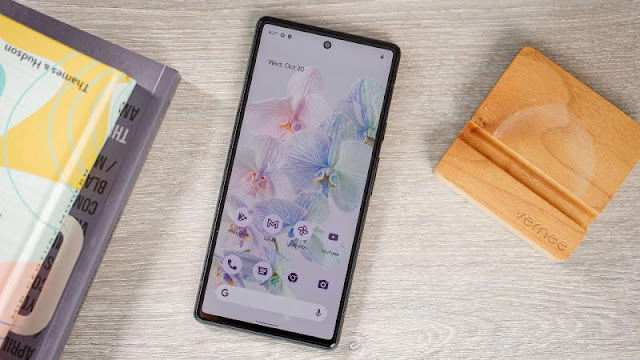







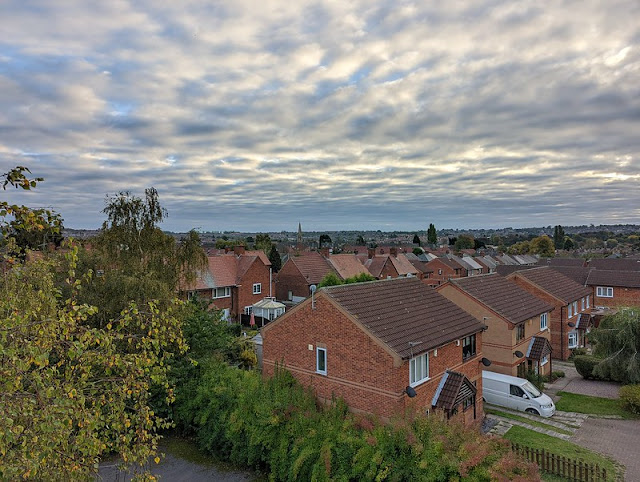











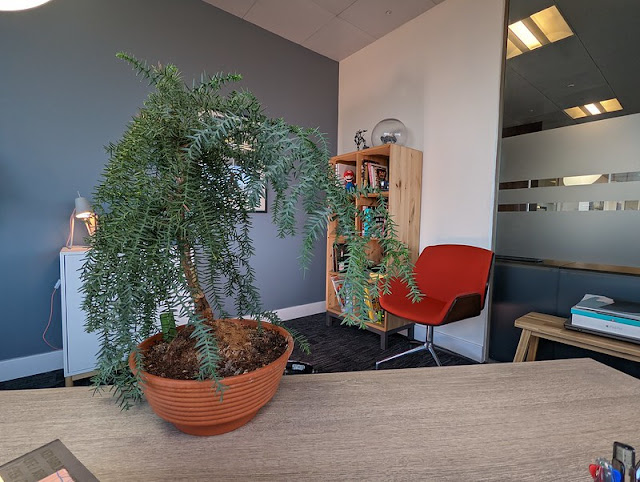




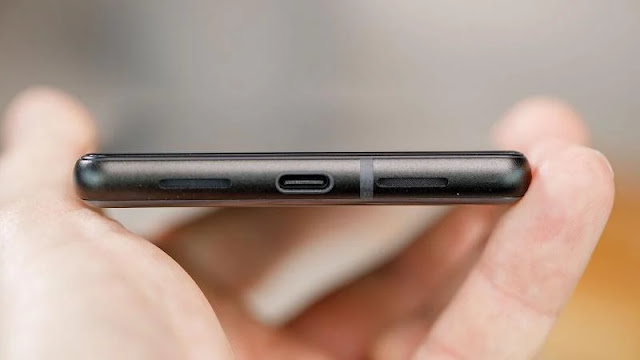
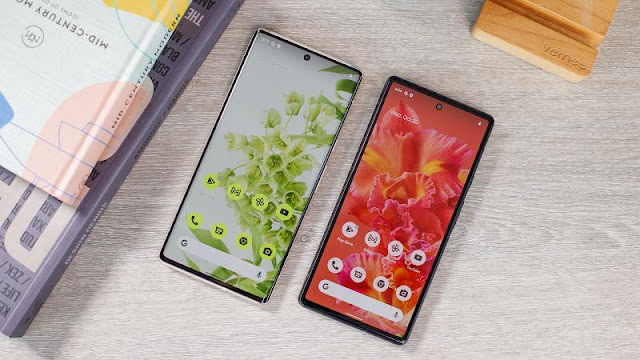

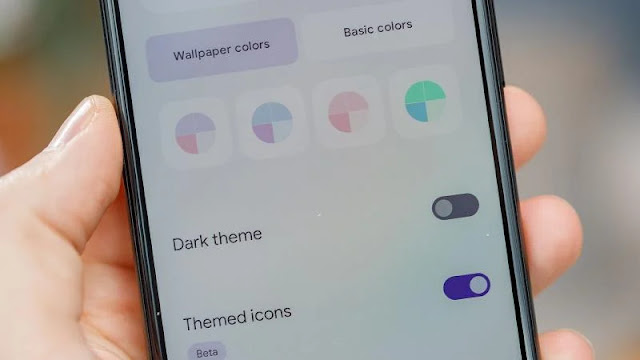

0 comments:
Post a Comment